Bathroom Fan Switch Replacement: A Comprehensive Guide
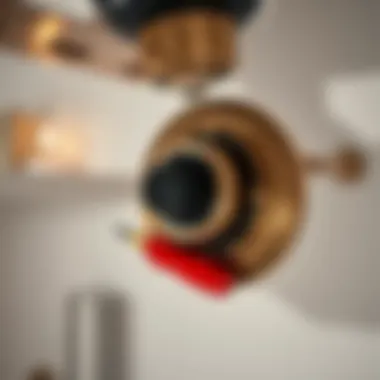
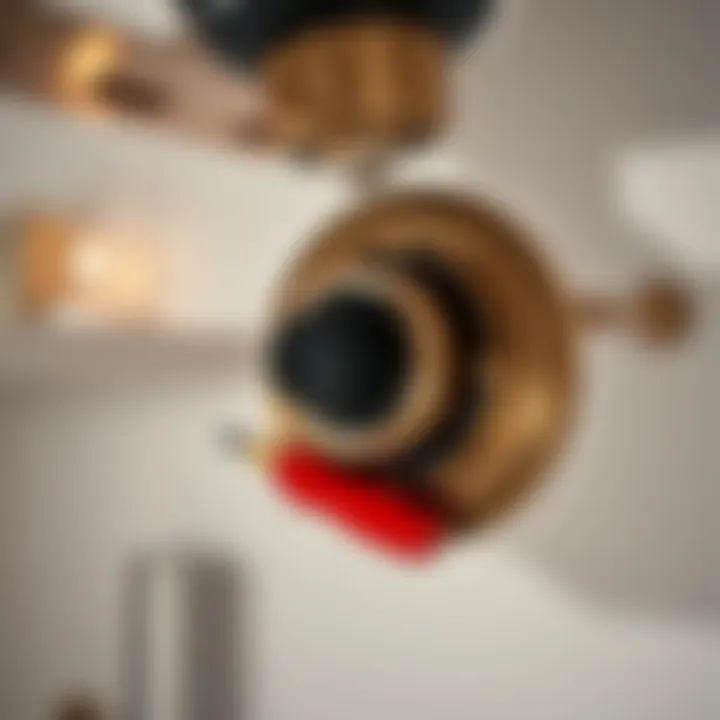
Intro
Replacing a bathroom fan switch might seem like a minor home improvement task. However, it plays a crucial role in ensuring your bathroom's ventilation system works effectively. A malfunctioning switch can lead to poor air circulation, increased humidity, and even mold growth over time. Proper ventilation is key to maintaining a healthy environment, especially in areas prone to dampness like bathrooms.
In this guide, we’ll walk you through the entire process of switching out that old, clunky bathroom fan switch for a new one. It’s not just about taking the old switch out and putting in a shiny new one. We’ll cover all the relevant tools you'll need, potential issues you could run into, and smart maintenance tips that might save you from future headaches.
Let’s dive into some current trends, as even something like a bathroom fan switch can reflect a broader aesthetic in home decor.
Current Trends
Styling your bathroom, including functional elements like switches, can significantly enhance the overall experience. Here are some trends to consider:
Color Palettes
In contemporary bathrooms, softer, muted tones are gaining traction. Think light grays, soft blues, and even pastel greens. These colors don’t just make the space feel calming; they give a sense of cleanliness and openness. When selecting a new switch, opt for one that harmonizes with this color palette. A sleek, matte finish could elevate the look of your switch, making it blend seamlessly into the decor while still being functional.
Popular Styles
People are leaning towards minimalist designs. This means switches that don’t just perform their function but also enhance the visual appeal. For instance, switches with a touch-sensitive feature or those that include a built-in timer are gaining popularity. Energy-efficient models are another hot ticket item; they contribute to sustainability while still managing to look stylish.
Visual Ideas
Creating a cohesive look in your bathroom doesn't just stop at the fan and its switch. Here are some visual ideas to spark inspiration:
Gallery of Styled Bathrooms
- Bathrooms with sleek, wall-mounted switches paired with horizontal stripes on the walls present a feeling of modernity.
- Open shelving with plants and decorative jars near the fan switches can provide a great focal point.
Before-and-After Transformations
Take a look at how simple tweaks like changing the fan switch can vastly improve the ambiance. Consider this:
- Before: An outdated, yellowed switch disrupts the clean lines of a renovated space.
- After: A new, crisp white switch accentuates the new decor, contributing further to a refreshing look.
"A well-ventilated bathroom is more than just a luxury; it’s a necessity for a healthy home."
To learn more about improving your home's ventilation, you might consider visiting Hygiene and Health Guidelines, where you can find extensive resources that underline the importance of maintaining proper air quality.
Understanding the Bathroom Fan Switch
Understanding the bathroom fan switch is key to maintaining a healthy and functional bathroom environment. These switches do more than turn a fan on or off; they play a crucial role in regulating humidity and preventing mold growth. A well-functioning bathroom fan minimizes moisture, ensuring that surfaces dry quickly and that air quality remains fresh, thus protecting both the structure of your home and your health.
Purpose of the Bathroom Fan Switch
The primary purpose of a bathroom fan switch is to control the ventilation system. By flipping this switch, you can activate the fan, which helps to eliminate excess moisture produced from showers and baths. This moisture, if left unattended, can lead to mold and mildew, creating an unhealthy living space.
Moreover, these switches often come with additional features that can enhance user convenience and efficiency. For instance, some models allow you to pre-set timer intervals or detect humidity levels, adding a layer of automation that many homeowners appreciate.
Types of Bathroom Fan Switches
Bathroom fan switches come in several types, each offering unique functionalities that cater to different homeowner needs and preferences.
Single-Pole Switches
Single-pole switches are the most common types found in bathrooms. They allow you to control a fan from one location with a standard on/off mechanism. This simplicity makes them a popular choice for many households. When you flip this switch, it connects or disconnects the power supply to the exhaust fan, directly controlling its operation.
One characteristic that puts single-pole switches ahead is their affordability. They're easy to install and don't require any advanced tech skills—just basic wiring know-how. However, they come with limitations, as they do not offer features like timers or humidity sensors, which can be a drawback for some. For straightforward bathroom applications, they serve their purpose well, but they're not the most sophisticated option on the market.
Timer Switches
Timer switches provide more control over the fan's operation by allowing you to set specific run times. After you set the timer, the fan will continue to run for that duration, even after you leave the bathroom. This is particularly useful because sometimes, fans can be forgotten after a shower, leaving moisture in the air longer than necessary.
The key feature of timer switches is their programmability, which allows users to set their preferences. A significant advantage is that they can help save energy by running the fan just long enough to clear moisture without needing manual intervention. On the flip side, the complexity of installation can deter some homeowners from opting for this model, particularly if they're not confident with wiring.
Humidity Sensors
Humidity sensors take the automation a step further. These switches detect the moisture level in the air and turn on the fan when needed, ensuring optimal ventilation without any manual action. This feature is incredibly beneficial in preventing mold growth, as it guarantees that the fan operates right when it’s required.
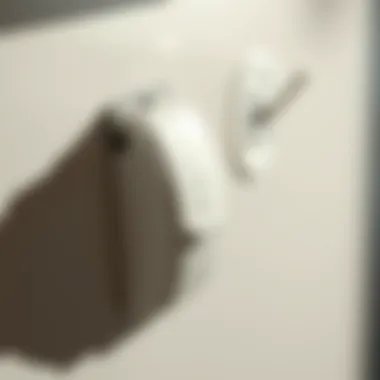
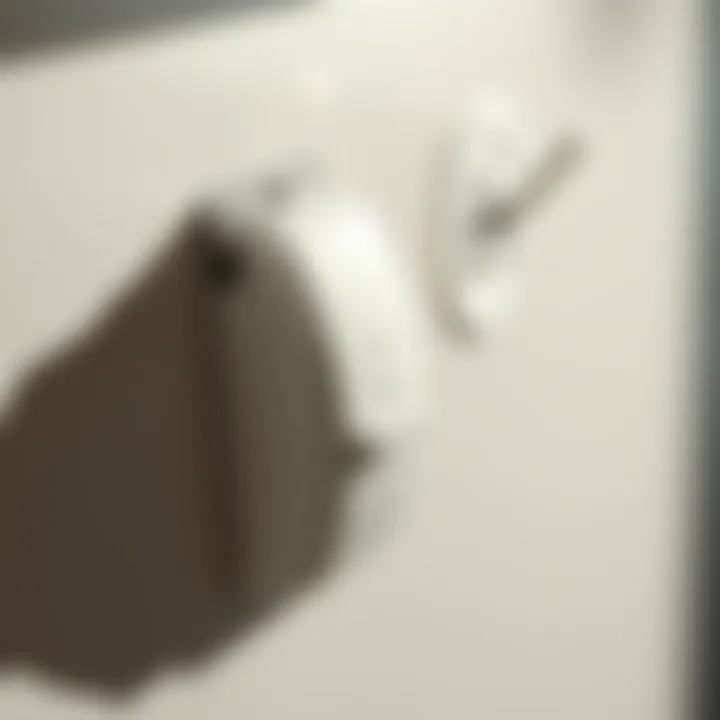
The main benefit of humidity sensors is their intelligent operation; they work autonomously, meaning less worry for the homeowner. However, with technology comes a higher price point, which might not sit well with everyone, especially for those on a tight budget. Additionally, the installation may require more advanced electrical work, which could be a concern for some DIY enthusiasts.
"Understanding the different types of bathroom fan switches is essential for making an informed decision that benefits your home's air quality and moisture control."
Assessing the Need for Replacement
Determining whether a bathroom fan switch requires replacement is crucial in maintaining the overall efficiency of your home’s ventilation system. Over time, switches can become less reliable due to wear and tear or electrical issues, which can lead to decreased performance of your bathroom exhaust fan. Not only that, a malfunctioning switch can affect the air quality in your bathroom, promoting mold growth or unnecessary humidity. Thus, being able to identify if it’s time for a change can save you from future headaches and costs.
Signs of a Malfunctioning Switch
A few telltale signs indicate that your bathroom fan switch may not be functioning properly. Here are some indicators that it might be time to assess your switch:
- Inconsistent Operation: If the fan doesn’t turn on or off when expected, this might signify a faulty switch.
- No Response: A complete lack of response when toggling the switch could indicate something is seriously wrong.
- Burning Smell: Any unusual odor, especially a burning scent, could suggest electrical issues, which should prompt immediate action.
- Flickering Lights: If the bathroom lights dim or flicker when using the fan switch, this may point to an underlying electrical problem.
Noticing these symptoms should drive homeowners to investigate further. A malfunctioning switch might lead to more significant issues down the line that are costlier and more complex to resolve.
Evaluating the Age of Your Switch
The age of your bathroom fan switch can also play a substantial role in deciding whether to replace it. Most switches have a typical lifespan of about 10 to 15 years, so if yours is older than that, it might be time for a proactive replacement. Here are some factors to reflect upon:
- Consider Your Home’s Age: If your home is older, it’s prudent to inspect all electrical fixtures for signs of wear.
- Look for Design Changes: Switch technology has improved over the years. If your switch is outdated, you might miss out on newer features such as humidity sensors or programmable timers, which can enhance your bathroom’s functionality.
- Previous Repairs: If your switch has undergone multiple repairs in the past, its reliability may be compromised, prompting a new replacement as a simpler long-term solution.
Understanding the age of your switch not only informs you of potential performance issues but can also guide decisions about upgrades to more efficient models. Efficiency saves money, and a switch’s age has a direct correlation with its operational reliability.
Tools Required for Replacement
Replacing a bathroom fan switch isn’t just about knowing how to swap one switch for another. It’s crucial to have the right tools at your side. Using proper tools not only speeds up the replacement process but also minimizes the margin for error. A sloppy job can result in malfunctions that could lead to safety hazards, or worse, an inefficient ventilation system. Homeowners should pay close attention to the tools they gather before embarking on this task.
Essential Hand Tools
Screwdrivers
Having the right screwdriver is vital for any DIY task. For this job, specifically, a Phillips-head screwdriver is the primary choice. Its unique design allows for a secure grip on the screws, making it easier to remove or tighten them without stripping the screw threads. The benefit here is straightforward: a reliable screwdriver means a smoother installation process. However, you should also consider keeping flathead screwdrivers handy. Sometimes, you may encounter screws that require a different approach.
One noteworthy characteristic of a good screwdriver is a magnetic tip, which helps to hold screws in place while you work. There’s nothing more frustrating than dropping a screw into the depths of a bathroom vanity while trying to get it into position!
Wire Strippers
Wire strippers are indispensable for anyone dealing with electrical connections. They help you remove the insulating layer from the wires neatly and cleanly. This is particularly important in electrical work where a secure connection is paramount. When replacing your bathroom fan switch, you will likely need to strip insulation off the wires to connect them to the new switch.
This tool isn’t just useful; it’s paramount for ensuring the integrity of the connection. An excellent wire stripper will have gauge markings which guide you in stripping wire to the correct length. A word of caution—ensure that you're using the correct gauge to avoid damaging the wire itself, which could lead to further complications down the road.
Voltage Tester
Never underestimate the importance of a voltage tester when working with electrical systems. This device helps ensure that the wires aren’t live before you start your work, providing an essential layer of safety. By using a voltage tester, you can confirm that there’s no electricity running through the wires, thus minimizing the risk of shocks. Practical and vital, it can save you a world of trouble.
A typical voltage tester is very straightforward to use; just place the tester lead against the wire, and it will indicate whether voltage is present or not. While it's a simple device, its role in ensuring a safe working environment cannot be overstated. However, keep in mind that there are different levels of sophistication in voltage testers. Investing in a reliable and well-reviewed model could pay dividends later.
Safety Equipment
Insulated Gloves
Safety shouldn’t be taken lightly, particularly in electrical work. Insulated gloves serve as protective gear to prevent electrical shocks while handling live wires. The unique feature of these gloves is their insulating properties, which are designed to withstand high voltage up to a certain level, providing you peace of mind as you navigate through the replacement process.
By wearing insulated gloves, you can work more confidently, knowing that you have an added barrier between you and any potential electrical current. Their durability is another key characteristic; they can usually withstand wear and tear from handling tools and materials, making them a valuable addition to your toolkit. However, remember that they should be inspected frequently for any signs of wear before use.
Safety Goggles
Protecting your eyes should be a paramount concern in any DIY task. Safety goggles are designed to shield your eyes from flying debris, sparks, and any potential harmful particles during installation. What sets safety goggles apart is their snug fit, which helps keep dust, debris, and any unexpected splashes away from your eyes.
While they might seem like an optional piece of gear, neglecting to wear them could lead to serious eye injuries. Investing in a quality pair can make all the difference, ensuring clear visibility and safety throughout your home improvement project. They can vary in terms of comfort and visibility, so picking a pair that's both functional and comfortable is an investment worth making.
Preparation for Replacement
Before you plunge into the process of replacing your bathroom fan switch, it's vital to ensure that you are adequately prepared. This phase serves as the foundation for a successful switch replacement. Proper preparation includes not only technical readiness but also ensuring safety and the right tools. Ignoring this step might lead to unexpected complications that could arise during installation. Taking time to properly prepare can save you from headaches down the line.
Turning Off Power Supply
Power safety cannot be overstated in any electrical project. Ignoring this crucial step could result in severe shocks or other electrical hazards. Before you touch any wires or switches, locate your home's circuit breaker and turn off the power supply to the bathroom. This will prevent any risk of injury while working on the fan switch. A good practice is to double-check with a voltage tester to confirm that the power is indeed off.
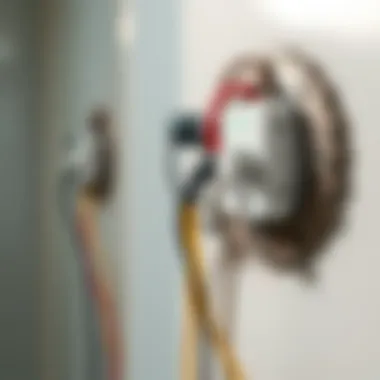
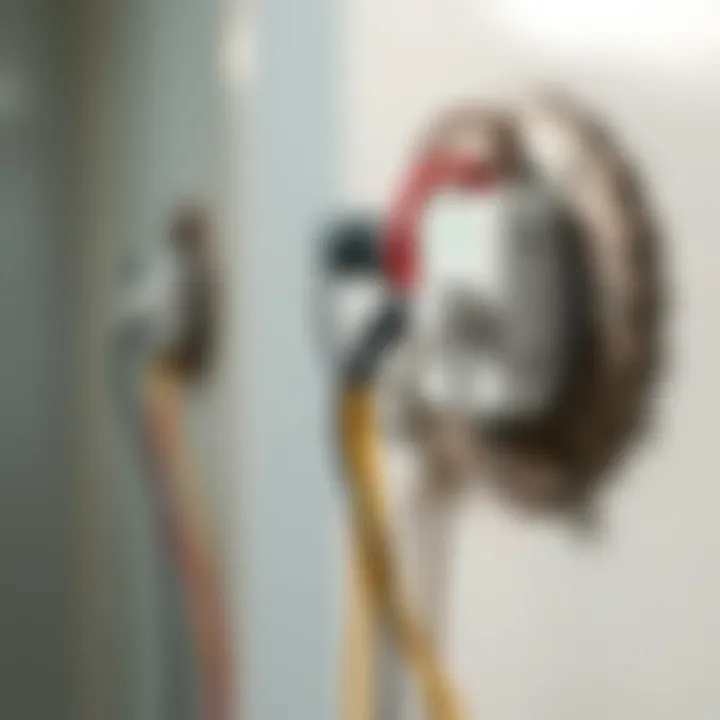
Gathering Necessary Materials
No project can succeed without the right materials close at hand. In the case of a bathroom fan switch replacement, there are two essentials that you need to focus on:
New Switch
The importance of choosing the right new switch is paramount. Opting for a switch that suits your bathroom's needs can enhance long-term functionality. Consider devices that offer features such as timers or humidity sensors, as these provide more convenience. For instance, a humidity sensor switch automatically controls the fan based on moisture levels, adding a smart touch to your bathroom. This ensures energy efficiency and moisture management, reducing the likelihood of mold and mildew.
However, the vast array of options can be overwhelming. A basic single-pole switch is simpler and often more budget-friendly. Just be mindful that this type doesn't offer the additional features that might be beneficial in a high-moisture environment.
Electrical Tape
Electrical tape is a crucial component for securely insulating any exposed wires. This particular material stands out for its flexibility and durability. When selecting electrical tape, look for options that are rated for electrical applications to ensure safety and reliability.
One unique feature of electrical tape is its adhesive quality, which is critical for preventing wire corrosion in humid environments, such as bathrooms. However, using substandard tape can lead to tape failure, putting your installation at risk. Always opt for well-reviewed brands that have been proven to withstand various electrical applications.
All in all, gathering these materials—taking into account the utility of your new switch and the reliability of your electrical tape—sets a solid foundation for the task ahead. Ensuring readiness in these aspects can ultimately facilitate a smoother switch replacement process.
Step-by-Step Replacement Process
Replacing a bathroom fan switch isn't merely about swapping out one part for another; it's a crucial process that impacts the overall functionality of your bathroom's ventilation system. Proper execution can lead to improved air quality and better moisture control, preventing long-term damage. As home improvement projects go, a fan switch replacement is manageable, and breaking it down into clear steps can make it straightforward and less intimidating for homeowners.
Removing the Old Switch
To begin, you’ll need to carefully remove the old switch. This process might seem mundane, but it's vital. The fan switch controls the airflow in your bathroom, and a malfunction can lead to mold growth or bad odors. Start by ensuring that the power supply is off; a simple mistake here could have dangerous consequences. Upon opening the switch's cover plate, you’ll typically find screws that need to be undone.
- Unscrew the Cover Plate: Use a screwdriver to remove the screws that hold the cover plate securely. Keep them in a safe spot as you’ll need them later.
- Detach the Switch: Gently pull the switch out from the electrical box. Be mindful of the wires attached to it. Avoid yanking too hard; instead, wiggle it loose if necessary.
Once you have the switch out, take a moment to inspect the wiring. Look for any signs of wear or damage. If you see anything questionable, it might be worth consulting an electrician. A fresh slate is often a good idea before moving forward with installing a new switch.
Wiring the New Switch
Once your old switch is out and you've checked your wiring, it’s time to wire in the new switch, a step that often has folks scratching their heads.
Identifying Wires
Identifying the wires might feel like deciphering a secret code, but it’s crucial for proper function. Typically, you would see black (live), white (neutral), and possibly a green or bare wire (ground). Each has a specific role:
- Black Wire: Powers the switch and fan.
- White Wire: Completes the circuit.
- Green/Bare Wire: Provides grounding for safety.
It's essential to ensure you've correctly identified these wires. If you connect them incorrectly, you could either fry the switch or create a shock hazard. This step is crucial because it reinforces the switch’s purpose to effectively manage the fan's operation.
Connecting Wires Correctly
Connecting wires correctly may seem straightforward, but it deserves careful attention. Following recognition of the wires, you will need to leverage wire nuts to tie everything together.
- Twist the Wires: Align the ends of the corresponding wires (black to black, white to white, green to green). Using a twisting motion, connect them firmly.
- Secure with Wire Nuts: Once twisted, cap each connection with wire nuts. This helps prevent exposed wires and possible shorts.
In this process, the real beauty lies in your attention to detail. Miswiring here could lead to a non-functional switch or worse, a fire hazard.
Mounting the New Switch
With the wires connected, you can now mount the new switch securely into the wall.
- Align the Switch: Position it back into the electrical box, ensuring it fits snugly.
- Screw it into Place: Use the screws from the old switch to secure it. Make sure not to overtighten, as this could damage the housing.
- Cover with the Plate: Finally, reattach the cover plate, giving your work a polished look.
By following these structured steps, you not only enhance the efficiency of your bathroom's ventilation but also gain confidence in your DIY abilities. This process may seem intricate at first, but with patience and attention to detail, it can be a rewarding task.
Testing the New Switch
After you’ve taken the time and effort to replace your bathroom fan switch, it’s crucial to give it a thorough test. Not only does this step confirm that your installation was successful, but it also ensures that the fan operates as intended, providing good ventilation and preventing issues down the line. In this section, we’ll look into the importance of testing, outline the essential steps for doing so, and highlight what to keep an eye on during this process.
Restoring Power Supply
Before you can test your newly installed switch, restoring the power must be your first move. This isn’t just flipping a switch back on; it involves checking that everything is secure. Make sure all wires are safely tucked away, and no exposed connections could create hazards.
- Locate the Circuit Breaker Panel: You need to find the breaker that controls your bathroom’s power. Make sure it’s labeled correctly. If not, exercise caution to avoid switching off a circuit that could affect another part of the house.
- Turn On the Circuit: Gently flip the breaker back to the ‘on’ position. You should hear a faint click.
- Observe for Any Flickering Lights: If the bathroom lights flicker or you hear unusual sounds from the switch, it might indicate that something’s amiss. In such cases, it’s sensible to turn off the breaker and double-check your wiring connections.
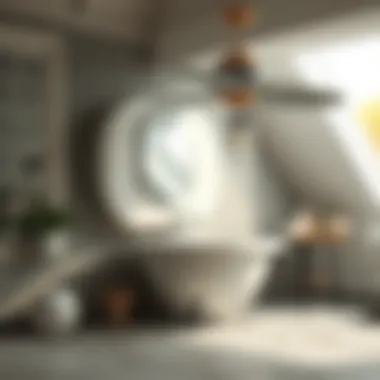

Once power is restored and you’re confident everything looks perfect, it’s time to test the switch.
Checking Fan Functionality
Now comes the pivotal moment: checking if your fan turns on and runs smoothly. This step determines if your installation was a success or if further adjustments are necessary.
- Flip the Switch: Engage your newly installed bathroom fan switch. If everything is in order, the fan should spring to life immediately. Listen carefully; any grinding or rattling noises might indicate loose parts or misalignment.
- Assess Airflow: Stand back a few feet from the fan. Can you feel any air movement? If the airflow seems weak, it might mean that the fan is underperforming, possibly due to improper installation or an insufficient power supply.
- Test Different Settings (If Applicable): If you opted for a timer or humidity sensor switch, make sure to test these features as well. For example, set the timer and see if the fan turns off after the preset duration.
Remember, regular checks for functionality can save you from larger issues later on. Ensuring that your fan operates consistently helps maintain a healthy bathroom environment, reducing moisture and the potential for mold and mildew.
Conducting these tests provides invaluable feedback on your switch replacement efforts. If any problems arise, it’s best to tackle them head-on rather than waiting for an issue to escalate. This practice not only reinforces the integrity of your installation but also enhances your understanding of how your bathroom ventilation works.
Common Issues and Troubleshooting
When it comes to bathroom fan switches, a few common issues can disrupt your peace of mind and the efficiency of your ventilation system. Knowing how to troubleshoot these problems is key. Not only will it save you time and money, but it can also prevent complexities down the line. This section dives into two main issues that homeowners might encounter: the fan not starting and the intermittent operation of the fan. Each problem is tackled with practical solutions, lending insight that empowers you as a homeowner.
Fan Not Starting
One of the most frustrating issues is when the fan simply refuses to start. If you've flicked that switch and nothing happens, take a breath and assess your surroundings. Here are some potential culprits that might be to blame:
- Power Supply: Begin with the basics. Is the power supply functioning? Check if a circuit breaker has tripped or is there an outage in your area? A quick inspection of your fuse box may reveal the problem.
- Faulty Switch: If power isn't the issue, then your switch may be on the fritz. A switch that's no longer functioning can also prevent the fan from receiving power. You might need to replace it, which was covered earlier in our guide.
- Loose Wiring: Over time, wires might become loose. Inspecting connections for tightness is a smart move. If you observe any fraying or damage, replacing the wiring should be your next step.
- Fan Malfunction: If the switch and power supply are alright, the fan motor might have seized up due to dust or simply wear and tear. Listen for unusual noises. If the motor is dead, replacement would be necessary.
“An ounce of prevention is worth a pound of cure.” Remembering this saying while conducting regular inspections can save you from major headaches.
Taking the time to understand these components not only eases the troubleshooting process but can also provide insight into how the system works, empowering you in your day-to-day routine.
Intermittent Operation
Experiencing the fan's behavior as intermittent can be equally frustrating. This problem can manifest as the fan starting and stopping on its own. Here are some common reasons why this might happen:
- Dirt and Dust Accumulation: One simple reason for intermittent fan performance is that dust might be clogging the fan blades or the motor. A regular clean can dramatically improve performance, so don't overlook basic maintenance.
- Wiring Issues: Similar to the issue of a fan not starting, loose wiring can also result in intermittent operation. If wires are not properly secured, the connection can round up and down. Thoroughly checking and maybe even tightening these connections can be the fix you need.
- Switch Defect: A malfunction in the switch itself can lead to erratic behavior. If your switch is worn or damaged, consider replacing it as it can ensure steadiness.
- Overheating: An overheating fan motor can turn off temporarily as a safety precaution. If you notice that your fan runs for a few moments and then stops, this could very well be the issue. Ensuring adequate airflow and cleaning filters may help mitigate this.
Understanding the common issues surrounding bathroom fan switches prepares you to deal with potential disruptions confidently. It's about being proactive and knowledgeable, ensuring that your home remains a pleasant sanctuary.
Maintaining Your Bathroom Fan Switch
Maintaining your bathroom fan switch is more than a good practice; it's a necessity for ensuring the longevity and effectiveness of your fan. Nobody enjoys stepping into a bathroom that smells musty or damp because the fan isn’t functioning as it should. Plus, regular upkeep can prevent costly repairs down the line. The bathroom, being a high moisture area, can strain electrical components if not properly maintained. Thus, a little attention to your fan switch not only keeps things running smoothly but also promotes a healthier home environment.
Regular Inspections
Inspections should be on your radar at least twice a year. If you’ve got a busy household or live in a place with high humidity, you might want to bump that up to quarterly. During these inspections, you're looking for a few key indicators:
- Physical Damage: Check for any cracks or signs of wear. A broken switch can lead to malfunction.
- Functionality: Flip the switch a few times. Does it feel smooth or is it sticking?
- Electrical Issues: Look for scorch marks or discoloration around the switch. This could signal a potential fire hazard.
By keeping tabs on these aspects, you can head off problems before they set in, ensuring that your switch—and by extension, your bathroom fan—remains in tip-top shape.
Cleaning and Care
When it comes to cleaning your bathroom fan switch, it’s generally a simple task, but one that pays off handsomely. Dust and grime can accumulate over time, posing a threat to the functionality of your switch. Here’s how you can give your fan switch a little TLC:
- Cut Power: Always ensure the power is cut before you start cleaning. Use your voltage tester to double-check.
- Dust Off: Use a microfiber cloth to gently wipe down the switch. Don't go crazy with water; just a slightly damp cloth will do the trick.
- Inspect: While cleaning, take the chance to inspect for any signs of moisture ingress or rust.
- Electrical Connections: If you’re savvy, you may even consider tightening loose screws on the switch. Loose wires can sometimes cause flickering issues or intermittent operation.
By adopting these cleaning habits, you will enhance not just the appearance of your switch, but also its operating life. Regular maintenance is a small commitment that yields immense benefits, keeping both your fan and the broader atmosphere of your bathroom optimized and efficient.
"An ounce of prevention is worth a pound of cure." - Benjamin Franklin
End
Replacing your bathroom fan switch is not just a routine maintenance task; it’s a step towards promoting better air quality and overall comfort in your home. The significance of a properly operating fan switch extends beyond mere convenience. An effective switch allows for responsive control over ventilation, reducing moisture buildup which can lead to mold growth and structural damage over time. Moreover, ensuring that your electrical systems are functioning smoothly can prevent larger issues down the line, saving you money on repairs and boosting the lifespan of your fixtures.
Summary of Key Points
Let’s recap the essential points covered in this guide:
- Understanding the Functionality: The bathroom fan switch plays a critical role in regulating airflow. Without it, odors and moisture can accumulate, leading to health risks and damage to your home.
- Tool Readiness: Having the right tools handy, such as screwdrivers and a voltage tester, is pivotal for a seamless replacement process.
- Installation Process: The step-by-step instructions facilitate a straightforward replacement of the switch while emphasizing safety measures like shutting off power.
- Troubleshooting Tips: Knowing how to identify common issues can save you time and frustration after the installation.
- Maintenance Practices: Regular checks and basic cleaning can prolong the life of your fan and switch.
Researchers have indicated that even a simple act like replacing a bathroom fan switch can maximize energy efficiency. 95% of households encounter problems related to air quality.
Final Thoughts on Bathroom Fan Maintenance
Taking care of your bathroom fan and its switch shouldn’t be a daunting task. Regular inspections and simple maintenance can keep both in check for years. Remember to assess your switch’s functionality periodically and tackle simple problems before they escalate. Little efforts can lead to a more efficient and fresher bathroom atmosphere.
As seasons change, humidity levels can fluctuate. This is when your bathroom fan switch truly shines, enabling proper ventilation that helps to combat any dampness. A proactive approach—understanding when to replace your switch, keeping tools at the ready, and conducting regular maintenance checks—will ensure that your bathroom remains a haven instead of a health hazard.
In keeping your bathroom switch in top shape, you might even want to consider joining community discussions on platforms like reddit.com about home repairs and maintenance tips. This way, you not only gain insight but also share your own experiences which might help someone else. Maintenance, after all, is a collaborative effort and keeps everyone in the know.



